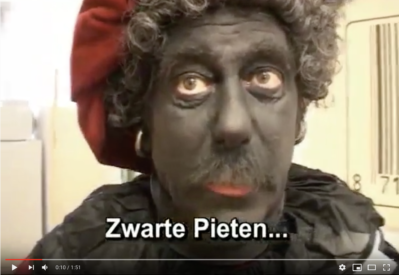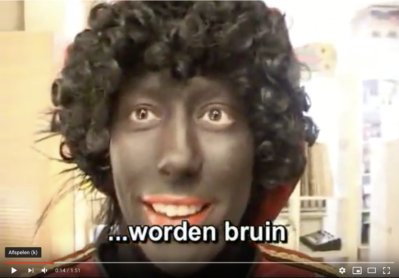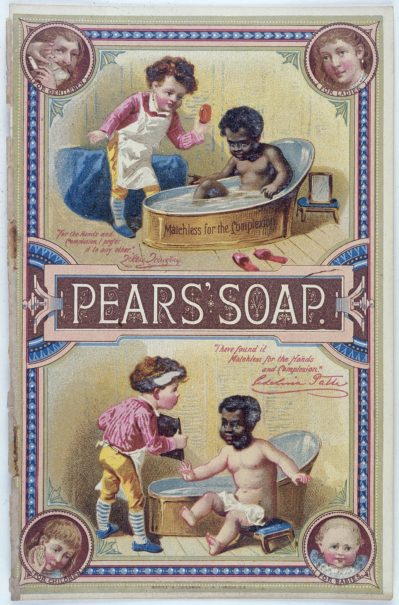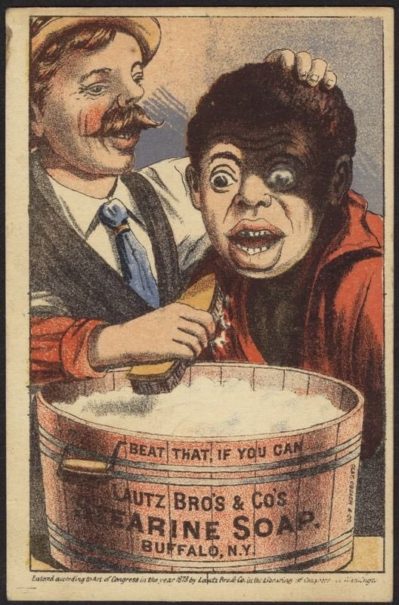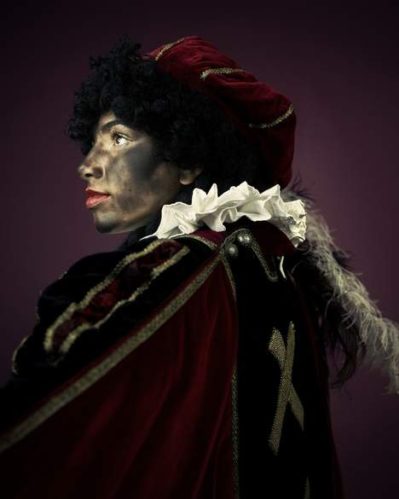The folkloric figure of Black Pete is a racist stereotype; a prolongation of a long history of blackface. As the folktale goes, mid November St. Nicolas and his group of helpers, called 'Pieten' arrived in The Netherlands. They will return to Spain after December 5th. During this period, I will post daily on the subject matter of the 'racist character of Black Pete'. Each post will show, deny, neglect, protest, present, discuss or challenge an aspect of this racist character. Black Pete must go!
Even though ‘chimney Pete’ is seen as an acceptable and harmless alternative, the racist stereotype lurks beneath the surface. This video by AD (a Dutch Newspaper) was published on Youtube Channel, called “Zwarte Piet, Bruine Piet” (Black Pete, Brown Pete) on 15 nov. 2007. In this short story the stereotype “Washing the Blackamoor White” is reinforced: black skin equals a dirty skin, unpure and uncivilised. This stereotype echoes through history, not only through the character of Black Pete, but also in a recent advertisement of Dove.
“Vroeger […] had je van die mooie vierkante gaten (schoorstenen)… Dan kon ik er doorheen. En dat zit nog allemaal in mijn huid. Maar ja die jonge pieten kunnen dat niet meer, want die zijn niet klein genoeg om door die kleine gaatjes te gaan. Die krijgen dan eigen hun natuurlijke kleur, zal ik maar zeggen. hè. Bij mij is het er nog niet uit. Als ik maar voldoende blijf wassen, dan is de kansen vrij groot dat ik volgend jaar de jongelui tint ook weer krijg.” (From the video on Youtube)
“Back in the days […] there were these nice square chimneys… I fitted though those. And that [soot] is still in my skin. But these young Petes are not small enough to fit through these tiny holes. They were return to their own natural color, as to speak. With me, it is not out of my system. But if i keep on washing, then it is possible that next year, I will get the young tone again.” (Translation by author).
“Henry Stanley, the imperial adventurers who famously traced Livingstone (‘Dr Livingstone, I presume’) in Central Africa in 1871, […] believed that the spread of commodities would make ‘civilisation’ in Africa inevitable […]. His exploits became associated with Pears’ Soap, Bovril and and various brands of tea. Soap symbolised this ‘racializing’ of the domestic world and ‘domestications’ of the colonial world. In its capacity to cleanse and purify, soap acquired, in the fantasy world of imperial advertising, the quality of a fetish-object. It apparantly had the power to wash black skin white as well ad being capable of washing of the soot, grime and dirt of the industrial slums and their inhabitants —the unwashed poor— at home, while at the same time keeping the imperial body clean and pure in the racially polluted contact zones ‘out there’ in the Empire.” (Hall 1997,240/241)














